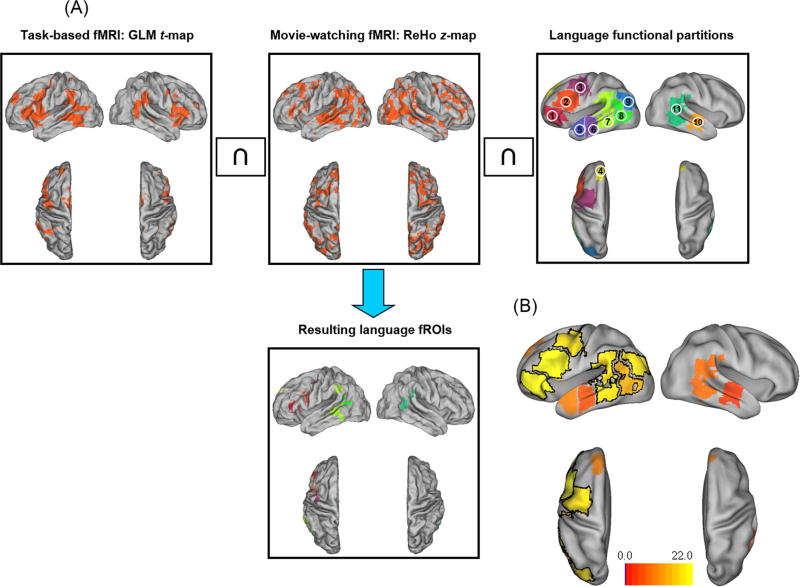Figure 1.
Procedure of generating individual subjects' language functional ROIs (fROIs), and defining the language response regions (LRRs).
(A) Generation of an example subject's language fROIs. The intersection of the subject's thresholded GLM t-map from the task-based fMRI and ReHo z-map from the movie-watching fMRI is masked by eleven language functional partitions to generate the language fROIs. The partitions included nine left-hemispheric masks: (1) IFGorb: orbital inferior frontal gyrus, (2) IFG: inferior frontal gyrus, (3) MFG: middle frontal gyrus, (4) SFG: superior frontal gyrus, (5) AntTemp: anterior temporal gyrus, (6) MidAntTemp: middle anterior temporal gyrus, (7) MidPostTemp: middle posterior temporal gyrus, (8) PostTemp: posterior temporal gyrus, and (9) AngG: angular gyrus; and two right-hemispheric masks: (10) right MidAntTemp, and (11) right MidPostTemp. For this example subject, the language fROIs were located within seven partitions (left IFGorb, IFG, MFG, SFG, MidPostTemp PostTemp, and right MidPostTemp).
(B) Brain renderings showing the number of subjects who showed language fROIs within the eleven language functional partitions (range: 4-22 subjects). The six partitions (three in the left frontal lobe: IFGorb, IFG, MFG, and three in the left temporal lobe: MidPostTemp, PostTemp, AngG) within which more than half (≥ 11) of the subjects showed language fROIs are defined as the “language response regions” (LRRs, highlighted with black border).

